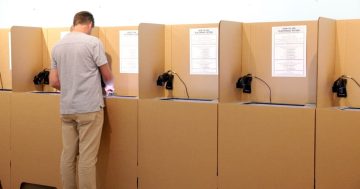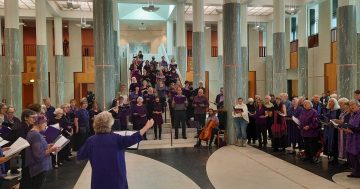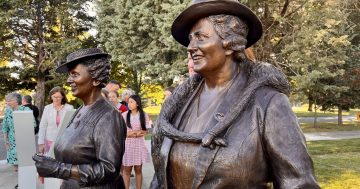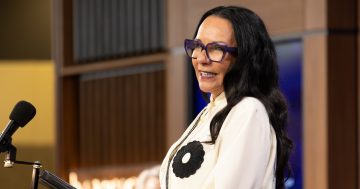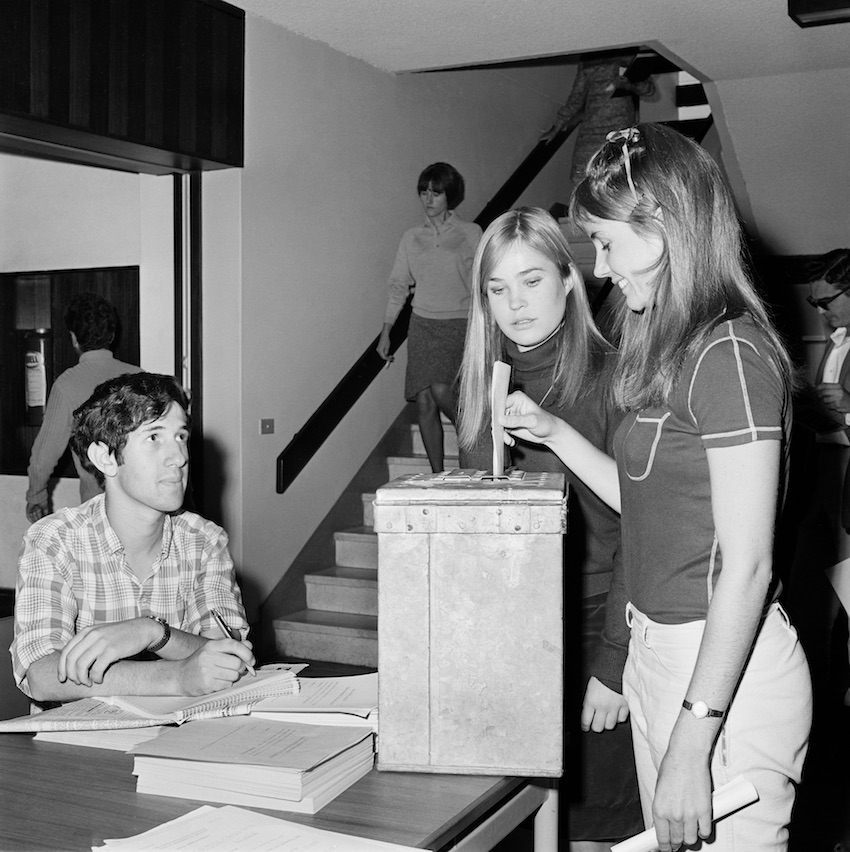
Young women exercising their right to vote in 1966. Photo: National Archives of Australia (A1501, A6375/3).
As we head off to the polls on election day, it’s the perfect time to reflect on the battle women fought more than a century ago for the right to vote.
During the global suffragist movement of the late 1800s and early 1900s, women protested, fought, were beaten and imprisoned, went on hunger strikes and died for the right to vote. Today, the idea that women wouldn’t be going to the polls to vote alongside their male partners, friends and relatives seems unthinkable. But in times gone by, women’s suffrage (the right to vote) was hard-fought and drawn out across the globe.
Suffragist opponents feared the disruption to the status quo. A woman’s place was thought to be in running domestic affairs and women were not considered capable of participating in politics – that men alone should be responsible for making political decisions. Those holding traditional views feared women’s emancipation and where that might lead. What might be eroded? What about the position of the man as the head of the house? There was even a concern that a female’s right to vote might impose limits on alcohol consumption in line with some women’s views on temperance.
Both the suffragist and anti-suffragist movements gained strong momentum globally between the 1890s and the start of World War I.
Next month marks 120 years since Australia became the first country in the world to give most women both the right to vote and the right to stand for the Commonwealth Parliament.
But our New Zealand sisters led the way with suffrage in 1893, staking the claim of being the first self-governing country to grant women the right to vote in parliamentary elections.
Australian Federation followed in 1901, with votes for Australian women coming into play in 1902. At a state level, South Australia had legislated equal political rights to both men and women earlier, in 1894. But Australian women were a step ahead of our New Zealand neighbours — women also had the right to stand for Parliament. Even so, it took another 41 years for the first females to be elected to Federal Parliament.
Moves to improve society were becoming obvious after women got the vote and were able to express themselves politically. Changes in legislation saw better healthcare, a far lower infant death rate, an increase to the age of consent and equal pay for equal work.
Still, other countries lagged behind and needed help, Mother England among them. Frustration was mounting that the British government continued to deny women the vote.
In 1911, a women’s suffrage march was held in London. This ‘great demonstration’ was organised by the Women’s Social and Political Union and involved 60,000 women from across the world carrying banners demanding women be given the vote. The procession wound through the city’s streets for about seven miles. And among them was a contingent of Australian and New Zealand suffragists, carrying a large hand-painted banner supporting their English sisters in their push for voting rights.
Australian artist Dora Meeson was one of those who marched wearing their white and red silk sashes. They carried an enormous banner designed and hand-painted by Meeson. It was so large (2.6 metres by 1.65 metres) that four people helped to carry it. Key leaders in the contingent were high profile Australian suffragist Vida Goldstein, Margaret Fisher (wife of the Australian Prime Minister) and Emily McGowen (wife of the New South Wales’ Premier).
Featuring the words’ Trust the Women Mother As I Have Done’, the banner represented the young ‘daughter’, Australia, in the first decades of Federation, encouraging the older ‘mother’, Britain, who is not really paying attention, to trust, and give women the vote.
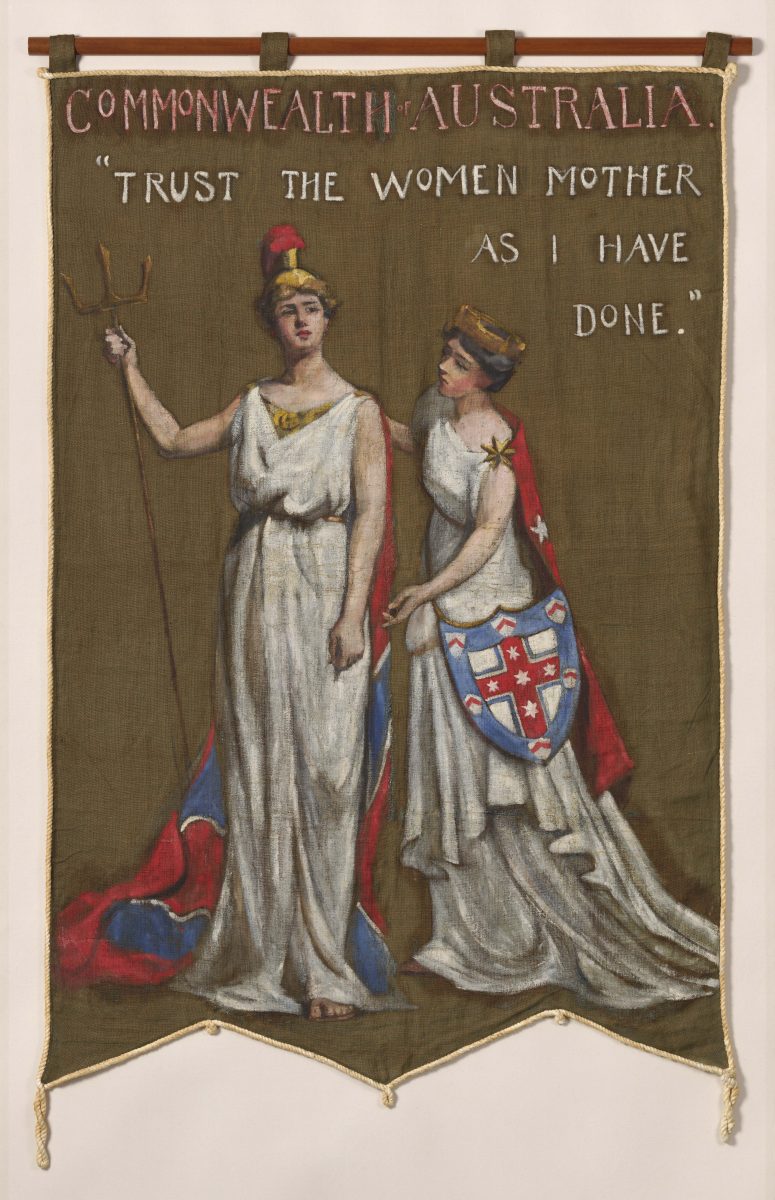
The Women’s Suffrage Banner, 1908. Photo: Supplied.
The success of the suffrage march was unlike any previous effort. It was timed to pre-empt the official coronation procession for King George scheduled for the following week. And also to challenge the British government’s anti-suffragist claims that women didn’t really want the vote and the suffragist concept was not very popular among women. The success of that huge march proved those claims to be so wrong.
British women finally won suffrage in 1918 as World War I ended. However, only women over 30 who were either householders or married to a householder or who held a university degree were entitled to vote. It was not until 1928 that British women were granted equal voting rights — after decades of effort.
American women followed in 1920 with the passage of the 19th Amendment.

Voting can be a relaxed affair in Australia. A beachgoer taking time out to vote in 1966. Photo: National Archives of Australia (A1200, L58971).
Dora Meeson’s banner can be seen on display at Parliament House in Canberra. It will also feature in the Women’s Suffrage in Australia exhibition at Parliament House from late June to early November 2022.
As you head to vote in this election, perhaps give a little thought to those who made the vote possible for women.












